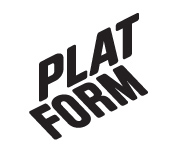A workshop on the politics and economics of independent initiatives 1:1projects, 6 – 11 October 2008, Rome
… from what, from whom, to do what, with whom?!
Keynote lecture by Maria Lind at MACRO
Public presentations and workshops at 1:1projects: Uqbar (Berlin, Germany), Platform (Vaasa, Finalnd), RDW (Reykjavik, Iceland), Färgfabriken (Stockholm, Sweden). Book presentation art-e-conomy [a theoretical reader] presented by curator Marko Stamenkovic.
Even though art is often perceived as the ultimate outsider, its relationship with economic and political systems is becoming increasingly sophisticated and multilayered. INDEPENDENCE! posits a blunt, urgent question: Independent from what and whom, to do what, with whom?!
INDEPENDENCE! analyses the practice and theory of the politics and economies of independent initiatives from Northern Europe. INDEPENDENCE! is an opportunity for the analysis of the language, perspectives and methods of distribution of contemporary culture through a practice-oriented experience: discussing the meaning of criticism, sharing knowledge and networking.
INDEPENDENCE! is organised in two sessions: a series of public events, including a lecture by Maria Lind, a book presentation with Marko Stamenkovic, and four presentations with the invited cultural associations Färgfabriken, Platform, RDW and Uqbar that will present their programmes and approaches; and a closed workshop attended by a group of selected participants from different media and cultural backgrounds: Milo Adami, Guido Affini, Anna Biagetti, Federica Bueti, Fabio Campagna, Gabriella Ciancillo, Giulia Cilla, O.B. De Alessi, Valerio Del Baglivo, Claudia Giordano, Gruppo Estraneo Permanente, Liquidcat, Francesca Manzini, Jacopo Mazzetti, and Zoe Romano.
To illuminate diverse aspects of INDEPENDENCE! 1:1projects hosts three artworks: Situation as of 31 July 2008 (1:1projects Roma), by Anna Scalfi, is composed of the five flags of the countries involved in the workshop, the length of every flag proportional to the number of women in each country’s Parliament; Festyessen (2008), a garland created by Carlo Steiner from newspaper articles about the Thyssen-Krupp case in December 2007, investigates the capacity and destination of socially engaged practices in relation to the art market; Carla’s non heroic jobs (2005), by Carla Cruz, highlights the relationship between the desire to produce ‘art’ and the social negotiations which shape it.
* The graphic design of the project was commissioned to Inclothink, a group of three young designers who collaborate with 1:1projects. Contact: inclothink.graphicdesign@gmail.com
Conceived and organised by:
Community partner: UnDo.Net
Supported by: Nordic Council of Ministers, Macro Amici, NOMAS FOUNDATION, Ines Musumeci Greco
Comments closed

































